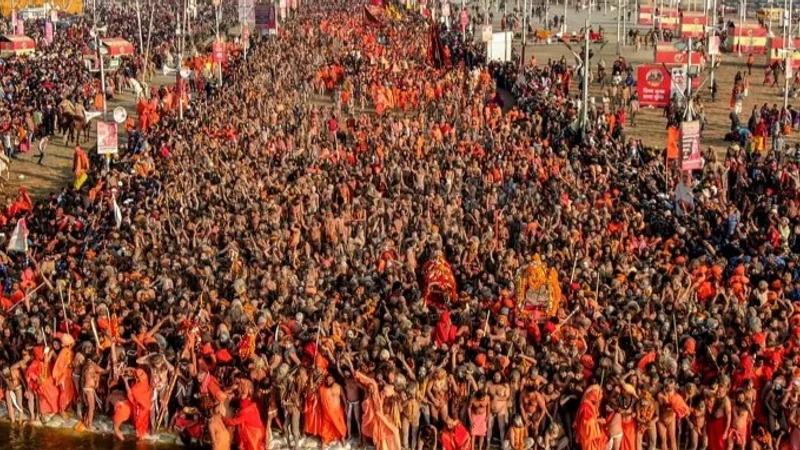Published 16:20 IST, January 13th 2025
Maha Kumbh 2025: Around 1 Crore Devotees Take Holy Dip On Day 1
Maha Kumbh Mela 2025, the largest religious congregation in the world, has commenced on January 13 with over 1 crore devotees already having took a holy dip.

Maha Kumbh Mela 2025: The largest religious congregation in the world has commenced on January 13 in Prayagraj with over one crore devotees taken a holy dip in Sangam locality.
Maha Kumbh Mela is known to attract millions of devotees, sadhus, and pilgrims across the globe to the Triveni Sangam, confluence of Ganga, Yamuna, and Saraswati, that allows visitors to have a chance at spiritual awakening.
UP Police chief Prashant Kumar said, Till now, around 1 crore devotees have taken a holy dip in Sangam area on the first ‘Amrit snan’ day & start of Mahakumbh 2025. The rush of devotees is continuing at Sangam. Police personnel are present there, drone surveillance is also being done. Underwater drones have also been used for security," citing media reports.
The expected tally of visitors attending Maha Kumbh Mela this year is 45 crorre during the course of 45 days, beginning with the Paush Purnima Snan and concluding on February 26, 2025, which coincides with Maha Shivratri.
Reportedly, close to 50 lakh devotees took a holy bath on the Sunday before the Sangam officially kicked off, setting expectations of a massive turnout.

Maha Kumbh Mela 2025: Key highlights and snan timings, date, and schedule
The occasion is marked by five significant baths with the first beginning on Paush Purnima (Monday), after three significant rituals, referred to as Shahi or Amrit Snan, Makar Sankranti (Tuesday, January 14), Mauni Amavasya (January 29), and Basant Panchami (February 3).
The final two major snan will take place on Magh Purnima (February 12) and Maha Shivratri (February 26).

Maha Kumbh Mela: The digital kumbh
In sync with the theme of 'Digital Kumbh', the local administration has released nine smartphone applications to make sure visitors to devotees and pilgrims are getting everything they need on their fingertips.
They will get all route planning, event schedules, and safety alerts with the help of these systems. Further, real-time surveillance will also help the administration to anticipate crowding at strategic locations, such as train stations.
Updated 16:20 IST, January 13th 2025



